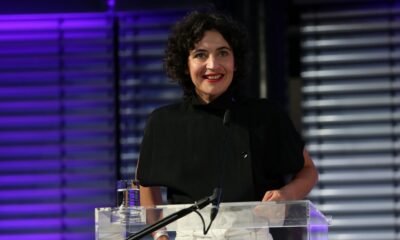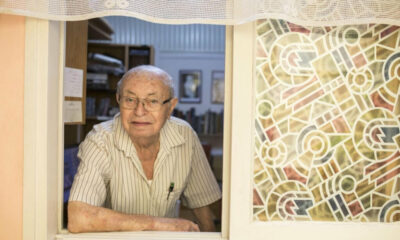Features
Moe Levy reminisces about the late Izzy Asper
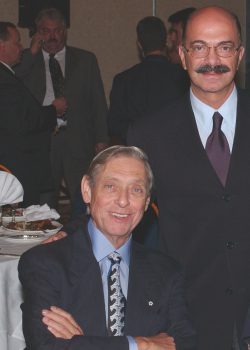
By BERNIE BELLAN In March 2023 Moe Levy retired as executive director of the Asper Foundation, after 23 1/2 years in that position.
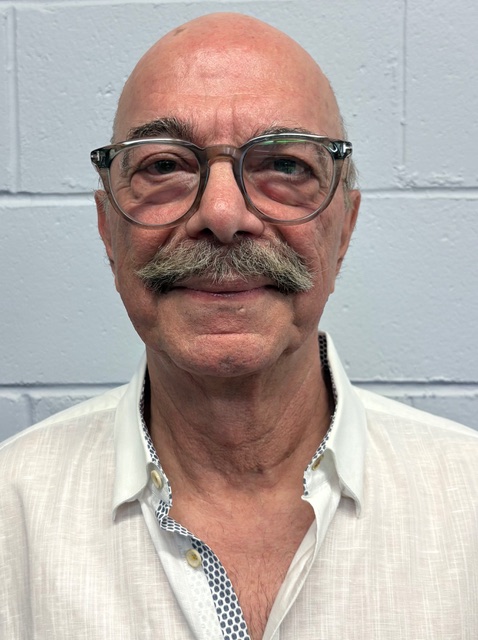
To that point Levy had been the only person to hold that position. In an April 2014 column about Levy I wrote about how he had come to fill that role. Prior to becoming executive director of the Asper Foundation, Levy had an extensive background in both the public and the private sectors.
After coming to Canada from his native Bombay, with a stop in Israel along the way, Levy entered university here, acquiring both a Bachelors and Masters in Business Administration from the University of Manitoba.
As I noted in my 2014 article, “Levy says that he began to work for the Manitoba government as soon as he graduated from university here. ‘I started off as a consultant, he explained. In two years ‘I created the first business incubator program in Canada,” he said with pride. ‘It was called ‘Enterprise Manitoba.’
“One of the programs that grew out of that particular initiative was something called ‘Business Start”,’which saw young entrepreneurs receive $5,000 grants from the government,’ ” Levy added.
Later, Levy was involved in various other enterprises, including joint ownership (with his brother) of what became two well known restaurants in Winnipeg (although both have since closed): Moskowitz and Moskowitz” (at the corner of Mayfair and Main), then Schmeckers (in St. James).
As I noted, however, Levy and his brother eventually sold the restaurants. “ ‘I couldn’t stand the restaurant business,’ Levy explained.”
In 1993, along with other investors, Moe bought a company known as the Northern Fur Exchange – which is where I first met Moe and his late wife Barbara (who was heavily involved in managing the company), when I went there to do a story about the business.
“But, by 1999, Levy says, he ‘wanted to take the company in a different direction than his partners, so he sold his interest to them and began to take stock of where he wanted to go
from there.
“ ‘I was 51 years old. I saw an ad in the Globe and Mail. It was an ad for a Jewish foundation (in Winnipeg). It didn’t say exactly which foundation. The ad was for an executive director for that foundation.’
“ ‘I threw my name into the hat,’ he said, without knowing that he was applying to be executive director of the Asper Foundation. Levy had met Izzy Asper only once before – in 1997, when Asper was in the process of endowing the Asper Centre for Entrepreneurship at the University of Manitoba. While the two men eventually forged a close relationship, it was as a result of Izzy’s sudden death in 2003 that Moe Levy found himself working hand-in-hand with Izzy’s daughter, Gail.
“While the Hebrew University was the major focus of the Asper family’s involvement in Israel for years, Gail paid tribute to the Asper Foundation’s work in Israel having ‘greatly expanded’ since Moe Levy became executive director of the Foundation,” I wrote in that 2014 article.
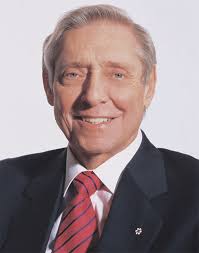
This past May 22, Moe Levy was the guest speaker for the Remis Luncheon group. His talk was advertised this way: “Moe will recount many compelling and funny stories of working with Izzy, one of Canada’s leading philanthropists and entrepreneurs. including the initial vision for the Canadian Mureum for Human Rights, the Asper School of Business, and many ground breaking projects in Winnipeg and Israel.”
Before he began his talk I asked Moe whether anything he was about to say would be off the record. He thought about it and replied that if he were going to say anything that he didn’t want recorded, he would let me know. As it was, he only thought of going off the record once – and even though he didn’t say: “This is off the record,” the fact that he even contemplated it led me not to repeat what he had said. (As you read on, you’ll find what it is that I withheld printing.)
Levy began by recalling sitting in Izzy Asper’s “beautiful back yard” one July evening in 2000. “He had just given away $50 million in the last 10 months. I started on September 1, 1999 and, in six months – $10 million to the Jewish Foundation, $10 million to the Winnipeg Foundation, $5 million to St. Boniface (Hospital), $5 million to the Hebrew U…”
“I had just come back from visiting the Museum of Tolerance in Los Angeles. Izzy’s passion for human rights goes back to 1973 when he tabled the first Bill of Rights in the Manitoba Legislature.” (Asper was leader of the Manitoba Liberal Party at the time. I remember interviewing him for a paper I was writing about the Manitoba Liberal Party.)
During the course of that evening, Levy said, Izzy broached the idea of building a human rights museum in Winnipeg. “Later that night, around midnight,” Levy continued, “the phone rang.”
“It has to be Izzy,” Moe’s wife (the late) Barbara said.
Picking up the phone, Levy observed that Izzy told him, “You know that idea we spoke about tonight? After you left, I went downtown and I found the land that we’re going to build this museum on…It’s the same site on which the museum is located today,” Levy noted.
“But,” Levy added, Izzy also told him: “It’s Tuesday night. By Friday I want you to get the land – to tie up the land.”
“But Izzy,” Levy said he asked Asper, “there are a lot of levels of government to go through.”
“Don’t worry,” Asper replied, “Just tell the guys I sent you and it’ll get done.”
Levy told a story about the first trip he took with Asper. It was on Asper’s private jet; they were flying to Toronto. As you might expect, if you knew anything about Izzy Asper, “the cabin was full of smoke.”
The purpose of the meeting was to meet with “two of the most important Zionist figures” in the history of Israel, Levy said: “Smoky Simon – who created the Israel Air Force; and Harry Horowitz” (who had deep roots in right wing Zionist causes, according to information on the World Zionist Organization website). Simon and Horowitz wanted “to get a million dollars for the Menachem Begin Centre.” (Incidentally Levy also mentioned that Horowitz had once come to Winnipeg at Sid Halpern’s invitation. Sid Halpern is a regular attendee at the Remis Grooup Luncheons and Levy was looking right at him when he made that remark.)
(What I find so contradictory about Izzy Asper, however, was that, as a supposed staunch defender of human rights, his actions belied the notion that he was a champion of human rights. Anyone who admired Menachem Begin, for instance, could hardly have been considered an advocate for human rights – unless by human rights you meant the rights of certain groups, but not others. Oh well, we’re all full of contradictions, aren’t we?)
Levy went on to describe his “life with Izzy as nothing short of amazing, exhilirating, exciting, such as “putting together the jazz series…” Apparently, according to Levy, Asper would go so far as to choose the playlist for any jazz concert performer (sounds like Trump), but “come Monday morning,” Levy said, “I would receive a memo from Izzy saying they did not play the playlist in the order I gave it to them!”
Also, according to Levy, Asper couldn’t just sit back and enjoy the jazz concerts. Instead, he would head up to the top of the Berney Theatre (home to the Asper Jazz Series) and “count the empty seats.”
Again, in addition to complaining about artists not following his playlist instructions, Asper would complain about empty seats in that same Monday morning memo. Since the concert series was invariably sold out in those years, any empty seat signified a subscriber not having shown up.
In that same memo Asper would complain, for instance, that “there were 17 empty seats. Those subscribers could have given their seats to someone else!”
The subject of Holocaust education was also something that was very important to Asper, Levy noted. “Izzy recognized very early on that we needed to reach not the Jewish kids, but the non-Jewish kids, so that over the course of time we’ve sent 14-15,000 kids on trips to Washington” (to visit the Holocaust Museum).
Another memorable incident which had a connection to Asper and in which Levy played a part, albeit a minor one, was “the Concordia riot” of 2002.
“Concordia” (University, in Montreal) ” was a hotbed for antsemitism,” Levy explained.
Along with Rabbi (Joshua) Poupkow, who was from Montreal, Levy and Asper decided (in September 2002) that it would be a good idea “to bring BB Netanyahu to Montreal to speak at Concordia. He (Netanyahu) was in between jobs, after serving as Finance Minister (of Israel), then Prime Minister, he was on the speakers’ circuit. So, we paid him …to come for three lectures: Montreal, Toronto, and Winnipeg.” (Levy wasn’t sure whether the exact amount Netanyahu paid should be published, so I won’t repeat the figure here. Suffice to say, it was a huge amount.)
“We knew that” the pro-Palestinians had as their aim that, “if Netanyahu shows up, he’s never, ever going to speak at Concordia. So this became a major challenge for Izzy. ‘I’m going to bring him here (Montreal) and I’m going to make sure he speaks,’ ” Levy said was what Asper wanted to do.
“Of course, BB always wanted to fly on a private jet, so Izzy – who had other things to do, told me to take his private jet and go pick up BB.”
“So I flew on Izzy’s private jet to pick up BB. I’ll never forget – his wallet was about this thick (and here Levy gestured with his fingers showing how thick Netanyahu’s wallet was) and it was full of thousand dollar bills,” Levy observed.
“Anyway, by this time, the press is full of stories – about how students are going to stop him from speaking,” Levy said. “So we land – and Netanyahu has one security guy with him and, I’m not kidding, he was about this high (gesturing to show that he was very short). But he had a lot of guns on him. I don’t know how many.”
“There are about 20 police cars waiting for us and they wouldn’t let the security guy off the airplane with the guns, so we sat while” diplomats negotiated how many guns the guard might be allowed to take with him and, in the end, “he was allowed to take one gun with him.”
As one might have expected, there was a huge crowd of demonstrators surrounding the hotel where Netanyahu was staying (the Ritz-Carlton).
Netanyahu though, was determined to speak at Concordia. However, his “security guy got on the phone with the Mossad in Israel and they said there was no frigging way they were going to let him speak. So his security guy told him he’s not going anywhere.
“But BB, all of a sudden, decides he wants a haircut. Someone tells him there’s an Arab barber in the basement. He was asked whether he was okay with that?”
He answered, “absolutely.”
Levy described the ensuing scene: There’s BB sitting in a chair, with this “Arab guy giving him a haircut,” while BB’s security guy has his hand resting over his jacket where his gun is – ready to spring into action if needed.
The upshot was that BB “was not allowed to speak.” A riot did take place at the Sir George Williams campus of Concordia University. Levy noted that there were two documentaries made about the riot, (one by the National Film Board, titled “Dicordia,” and the other by filmmaker Martin Himel, titled “Confrontation at Concordia.”)
Another story Levy told was about a meeting held between Asper and then-Prime Minister Jean Chretien to discuss federal funding for the Human Rights Museum. (Levy says the meeting was held at the Prime Minister’s residence in Ottawa, but every other source that I was able to check referred to a meeting at Izzy Asper’s Palm Beach residence, in 2001. Perhaps there were two meetings.)
In either event, Levy said that, as the only other person in the room during that meeting, he was fascinated with the notion that the most powerful man in Canada at the time, Jean Chretien – according to Maclean’s Magazine, was meeting with the second most powerful man, Izzy Asper, again – according to Maclean’s Magazine,
As Levy described it, “there’s these two guys, arguing over how much money” the federal goverment would be willing to commit to the building of the human rights museum. “There was something explicit going on between these two guys. I thought: ‘You two guys use that kind of language with each other?’ “
Asper always liked to dream, Levy noted. For example, where the skating rink now sits on the Asper Campus, “he wanted to build a 500 seat concert hall,” Levy said.
He told another story about a trip Izzy and Gail Asper took one day in 1999 to Steinbach, where they were supposed to meet with Chuck Loewen of Loewen Windows. The purpose was to hit up Loewen for a contribution to the Canadian Museum for Human Rights, which was still only a dream that Izzy wanted to bring to fruition at that point. Although one of Canada’s most successful businessmen by then – perhaps actually the most successful at that time, Izzy was not above doing the grunt work that was indispensable to raising enough money for the museum project – so that eventually the idea was that with enough privately donated money, it would leverage the federal government into contributing to the project as well.
Levy said that, while sitting in his oiffice, he got a call from Gail, who said, “Moe, we’re at Marion and Lagimodiere. How do we get to Steinbach?” It turned out they were in the wrong lane, but eventually, after much explaining which way to go, Izzy and Gail did make it to Steinbach, Levy observed.
Levy recalled the say he heard the news that Izzy had suffered a massive heart attack – and had died. “It was October 7, 2003, and we were on our way to Vancouver to launch an international architectural competition” for the design of the new museum.
Izzy Asper’s funeral was one of the largest ever held in Winnipeg. It attracted former prime ministers, the then-Prime Minister (Chretien), and a host of dignitaries from all walks of life. The day that Izzy died, Levy added, he was supposed to have received an honourary Indigenous title from Manitoba Grand Chief Phil Fontaine, which, translated into English, Levy explained, was “He who walks among the stars.”
Levy said: “What can I say about Izzy except that he was charismatic, a raconteur, bon vivant, had a great sense of humour, was an entertainer…he lived a hundred lives.”
Later in his talk, Levy added this about Izzy Asper: “He was the kind of guy who made you think you could accomplish anything. He made you sit there – and imagine and, before you knew it, you were doing things well beyond what you thought was your own capacity.”
In describing the effort that went into fundraising for the museum, Levy noted that “When you think about it, 75% of the money privately raised came from this little city (Winnipeg) – $115 million.” That fact was pivotal in then-Prime Minister Stephen Harper’s coming forward with a major contribution from the federal government: $100 million plus $21.7 million annually for operating costs.
Turning to Izzy Asper’s “passion for Israel,” Levy described Izzy’s support for the Hebrew University of Jerusalem, saying that Izzy was determined to undertake the human rights museum project without sacrificing any of his commitment to the State of Israel.
Levy noted that “in a month the Hebrew University is going to celebrate its hundredth anniversary. Who was there (at its founding)? Einstein, Freud, Buber – the greatest minds that ever lived,” he suggested.
Features
Is This the End of Jewish Life in Western Countries?
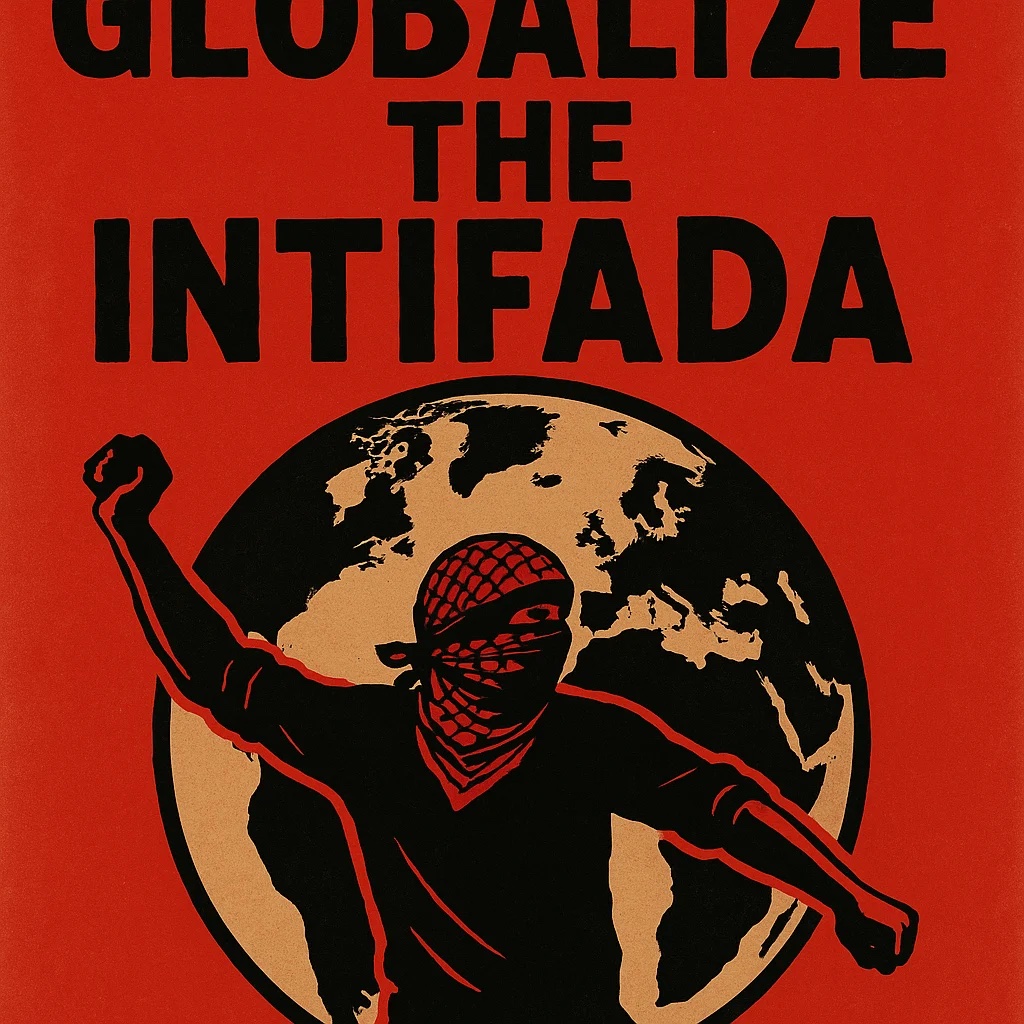
By HENRY SREBRNIK “Globalize the Intifada” has been the chant echoing through streets since October 7th, 2023. It was never a metaphor, and we now see the gruesome results across the western world, from Australia to Canada: the rise of groups of large, active networks of Islamist and anti-Zionist organizations.
Jews in the West are discovering that the nations they defended, enriched, and profoundly shaped have become increasingly inhospitable. After the Holocaust, explicit Jew-hatred became unfashionable in polite society, but the impulse never disappeared. The workaround was simple: separate Zionism from Judaism in name, then recycle every old anti-Jewish trope and pin it on “the Zionists.”
We have seen the full legitimization of genocidal anti-Zionism and its enthusiastic adoption by large segments of the public. The protests themselves, as they began immediately on October 7th, were celebrations of the Hamas massacres. The encampments, the building occupations, the harassment campaigns against Jewish students, the open calls for intifada, the attacks on Jews and Jewish places have become our new norm. History shows us that antisemitism does not respond to reason, incentive or the honest appeals of the Jewish community.
Outside the United States, there is no Western political establishment with either the will or the capability to address this problem, let alone reverse its growth. I’m sorry to say this, but the future of Western Europe, Canada, Australia, and New Zealand is likely to be increasingly Jew-free.
Today, police stand and watch mobs chant for Israel’s destruction, call for the genocide of its people, harass visibly Jewish citizens, and drive antisemitic intimidation deep into urban life. They now believe their job is to enforce the law only if it does not risk upsetting violent constituencies. This makes Jews expendable, because defending them risks confrontation. This was very clear in the Bondi Beach massacre.
Jews are again donning caps instead of kippot, dressing generically with no cultural markers, and avoiding even a tote bag with Hebrew on it. A corrosive creep toward informal segregation in retail and service sectors is occurring, as Jewish customers report being refused service. A mezuzah hanging from a rideshare mirror leads to cancellations. When Jews express frustration, they are accused of exaggeration or attempting to suppress criticism of Israel. Jewish fear is not treated as a real problem.
“Jews Are Being Sent Back into Hiding,” the title of a Dec. 15 article in the New York Free Press by David Wolpe and Deborah Lipstadt, asserts that the attacks on Jews, including physical assaults, social media campaigns and, most tragically, the recent murders in Australia, are part of a purposive campaign designed to make Jews think twice about gathering with other Jews, entering a synagogue, going to kosher restaurants, putting a mezuzah on the doorpost of their apartments or dorm rooms, or wearing a Jewish star around their necks.
“We know of no one who would consider giving a niece, nephew, grandchild, or young friend a Jewish star without first asking permission of their parents,” they write. The unspoken, and sometimes spoken, question is: “Might wearing a star endanger your child’s well-being?”
Recently, a prominent American rabbi was entering a Target store in Chicago with her grandson, whom she had picked up from his Jewish day school. As they walked into the store the 10-year-old reached up and automatically took off his kippah and put it in his pocket. Seeing his grandmother’s quizzical look, he explained: “Mommy wants me to do that.”
Borrowing a phrase from another form of bigotry, they contend that Jews are going “back into the closet.” No public celebration of Hanukkah took place in 2025 without a significant police presence. Some people chose to stay home.
Lipstadt and Wolpe know whereof they speak. They are respectively a professor of history and Holocaust studies who served as the Biden administration’s ambassador tasked with combating antisemitism, the other a rabbi who travels to Jewish communities throughout the world, and who served on Harvard’s antisemitism task force in the aftermath of the October 7, 2023 pogrom.
What the world has seen over the past two years is a continual, often systematic attempt to terrorize Jews. When political leaders fail to condemn rather than merely “discourage” chants of “globalize the intifada,” we are seeding the ground for massacres like the Hannukah one in Sydney.
If each Jewish holiday will now be seen by antisemites as an opportunity for terror, then the prognosis for diaspora Jewry is bleak. There will be fewer public events, more alarms, more bag checks at doors; there will have to be more security and more police. Unless things change, Jewish life in the diaspora will become more sealed off from the larger society.
Why has this failure come about? Confronting antisemitism, stopping the mobs, challenging the activists, and disciplining antisemitic bureaucrats all carry electoral risk for politicians; Jews are demographically irrelevant, especially compared with Muslim voters, with the U.S. being the only partial exception.
There are those who suggest Jews stop donating funds to educational and other institutions that have turned against us. At this point, I doubt very much that withdrawing dollars will have an impact. For every dollar withdrawn, there will be 100 from Qatar and other sources in its place.
Throughout history, the way a society treats its Jews predicts its future with unerring accuracy. If Jews leave, it will be because a civilization that will not defend its Jews will also defend next to nothing and may itself not survive.
Henry Srebrnik is a professor of political science at the University of Prince Edward Island
Features
Canadian Travel Trends 2025 and the Forecast for 2026

Canadians planning to travel in 2026 should keep an eye on shifting trends and learn what’s coming their way in the new year.
Canadian travel has seen a fair amount of change and instability over the last few years, thanks mostly to the country’s southern neighbours. In 2025, and likely into 2026, travel trends in the Great White North have stabilized significantly, with more Canadians than ever choosing to travel within their own borders. And with 2026 nipping at our heels, let’s take a look at what trends in 2025 have been the most prevalent and how these will shape travellers’ decisions and travel plans in the new year.
Canadian Travel in 2025
Thanks to many factors, including politics, inflation, and airline competition, the majority of travellers opted to explore their own country rather than go abroad in 2025. More local travel money is remaining within the local economy, further bolstering it and making it an even more attractive travel choice. Thanks to the accessibility of private jet charter travel across Canada, luxury local travel has increased as well, with more people looking to immerse themselves in luxury from the start of their journey to the end. When travelling abroad, the U.S. is now the least favoured destination for most Canadian travellers, but Europe saw a significant increase in interest as 2025 progressed.
As local Canadian travel increased this year, it brought with it a drive for local tourists to find their own “Secret Canada” destinations. Far more “off the beaten path” trips were taken, resulting in more travel spending going to smaller or more boutique destinations rather than big city experiences. In 2025, travellers have sought out the wonderful diversity in destinations and landscapes, allowing themselves to access more grounded and authentically Canadian experiences.
Canada’s Government has also encouraged and benefited from local tourism, with initiatives like the Canada Strong Pass offering extra benefits. Initially implemented in the summer, but reintroduced from December 12, 2025, until January 15, 2026, this is a ticket to enjoying the richness of their own culture (iconic natural destinations, museums, train trips) at a discounted rate or even in some cases free of charge.

In the second quarter of 2025, locals took a total of 90.6 million trips that included at least some time spent travelling domestically, which indicated a rise of 10.9% on a year-over-year basis. Of these trips, 58.6 million were day trip experiences (an increase of 12.4%), and 32.0 million were overnight trips or longer (an increase of 8.4%).
Between April and June of this year, Canadian residents spent $20.3 billion on local tourism, which represented a 13.5% year-over-year increase. When undertaking day trips, Canadians spent approximately $101 per visit. On overnight trips, locals spent around $449 per trip, with an average trip length of 2.6 nights. The Great White North is clearly holding its own, and then some, in the international travel market.
Canadian Travel in 2026
As we move towards 2026, many trends from 2025 will remain the standard, but some will evolve to fit changing demands. Across the board, though, the outlook for the coming year is that Canadian travel will become a far more personal thing, with trips being customized to fit travellers’ requirements and desires more closely than ever before. From choosing a hotel that they feel smacks of a beloved destination in their favourite novel, to taking a trip to a destination just to try a snack that’s famously made there and only there, travel is stretching and shifting for the traveller rather than the other way around.
Here are some slightly more specific predictions for the coming year based on the answers of polled Canadians.

- One Gen Z-led trend is the idea of “glowmad travel”. Beauty and skincare are now influencing the places that Gen Z travels, and their trips are far more likely to include visits to skincare and beauty destinations like spas and luxury stores.
- Gen Z adults are helping to drive another trend: family travel as a way to save money. 345 of Gen Z adults polled say that they would take this route.
- More than 70% of Canadians are considering some sort of mountainous getaway in 2026, specifically in summer or autumn.
- 48% of polled Canadians say they would book or consider a destination thanks to the influence of literature.
- More travellers than ever are choosing their destinations based on the accommodations available. 44% of polled travellers say that in 2026, accommodation and what it can offer comes first, and the surrounding destination comes second.
The World Is Your Nova Scotia Lobster Roll
Choose something a little different when you vacation this year. Oysters are great, but a Nova Scotia lobster roll might be more to your taste! Canadians know good travel, so take a maple leaf out of their book and experience something new this year.
Features
Fake IDs and Underage Bettors: The Growing Problem for Sportsbooks
The expansion of legalized sports betting worldwide has resulted in sportsbooks grappling with a problem that they can no longer overlook: the increase in underage individuals using counterfeit identification to place bets. As more and more ways to bet through mobile apps and online sign-ups emerge, minors who are set on their goal are inventing ways to get around age limits. The emergence of this trend is a breach of the law and morality; however, it is also an enormous problem that threatens the very existence of the platforms, which are forced to rigorously obey the regulations .
Why Fake IDs Are Becoming More Sophisticated
Conventional fakes used to be quite simple to recognize—low-quality printing, different fonts for the text, and inconsistent holograms would make them not very reliable for any kind of verification. But counterfeit documents have changed significantly over time. Nowadays, fakes are made better with the help of printing technology and software, and they can even copy barcodes and other scannable features, so their IDs look almost real.
This fact complicates things significantly for sportsbooks, especially those operating online. Most of the time, automated identity verification systems capture a user’s photo and perform basic data matching. In cases where a very good fake ID is used by a teenager who looks older, some systems cannot recognize the trick. Therefore, young bettors have found ways to be able to place wagers through these loopholes.
The Influence of Social Pressure and Online Culture
Social media is a major factor in the increase in risky behavior that minors are engaging in. On various platforms such as Instagram, TikTok, and Reddit, teenagers come across betting slips, parlay wins, and big-payout screenshots that are shared, most probably, by other users. The glamorization of sports betting is leading young people to copy the behavior of influencers, older friends, or even celebrities, as they think that it is the right thing to do.
The competitiveness usually associated with sports is one of the reasons some minors decide to bet on sports. For many, betting becomes another way to engage as a fan—by predicting outcomes, challenging friends, and experiencing the same excitement that adult fans enjoy. Unfortunately, only a small number of minors fully understand the financial risks involved, making them more vulnerable to developing harmful patterns that could continue into adulthood. This is why choosing the most responsible sportsbook, which you can discover more here, is essential. Such platforms provide guidance, enforce safe practices, and ensure regulated play, allowing fans to engage with sports betting in a more informed, secure, and controlled manner.
Sportsbooks Facing Regulatory Pressure
The sportsbooks are being given the task of more closely monitoring and preventing minors from betting on their platforms. If they fail, harsh penalties are possible, including severe fines, loss of a gambling license, and negative publicity that undermines a brand’s trustworthiness. As a result, it is becoming increasingly difficult for people to verify their identities, although this also inconveniences those who are, in fact, legitimate users.
Sportsbooks have to decide between two options that are in conflict with each other: on the one hand, they have to keep the registration process as simple as possible, and on the other hand, they have to carry out age verification in a very thorough manner. The work of balancing is tough, and the underage gamblers are trying all methods to find a way out.
The Rise of Identity Fraud Services
An alarming trend is the emergence of online vendors who openly advertise fake IDs and identity documents. These vendors often claim their products can pass standard sportsbook checks. Some even tailor IDs to specific regions, knowing that certain provinces, states, or countries use verification systems that rely heavily on image comparison rather than live validation.
The availability of these fraudulent services not only empowers minors but also exposes sportsbooks to risks related to stolen identities, money laundering flags, and fraudulent accounts that may later become legal liabilities.
The Consequences for Underage Bettors
While a minor might think that gambling is just a bit of fun without any harm, the outcome can be quite serious. If there is a catching, accounts are closed right away, winnings are confiscated, and parents or guardians, in some cases, are made legally liable for any financial disagreements. Besides that, the risk of developing a gambling problem in the future increases with early exposure to gambling, especially since teenagers are more impulsive and less capable of handling financial risks.
The majority of minors are not aware that sportsbooks keep very detailed records of their activities, including device information and IP addresses. In case a fake ID works one time, using it multiple times will definitely lead to getting caught.
A Growing Problem That Requires Joint Action
Fake IDs and underage betting are issues that have become a major challenge in the industry, and no single stakeholder can solve these problems on their own. Sportsbooks need to enhance their identity verifications, regulators should get prepared for new types of fraud, technology providers have to come up with new solutions more quickly, and parents should always be aware of what their children are doing online. The industry’s rapid development is making this problem more and more urgent because the number of minors trying to get around the safety measures is increasing.
Sports betting can serve as a fun and legal form of entertainment for adults, but the need to protect the youth is what defines the industry and ensures its survival in the long run. As the quality of fake IDs keeps improving and the online culture is more and more inclined to consider betting as a normal activity, sportsbooks must ensure that underage users do not have access and that the environment is safe for all users. They need to do this now more than ever.


